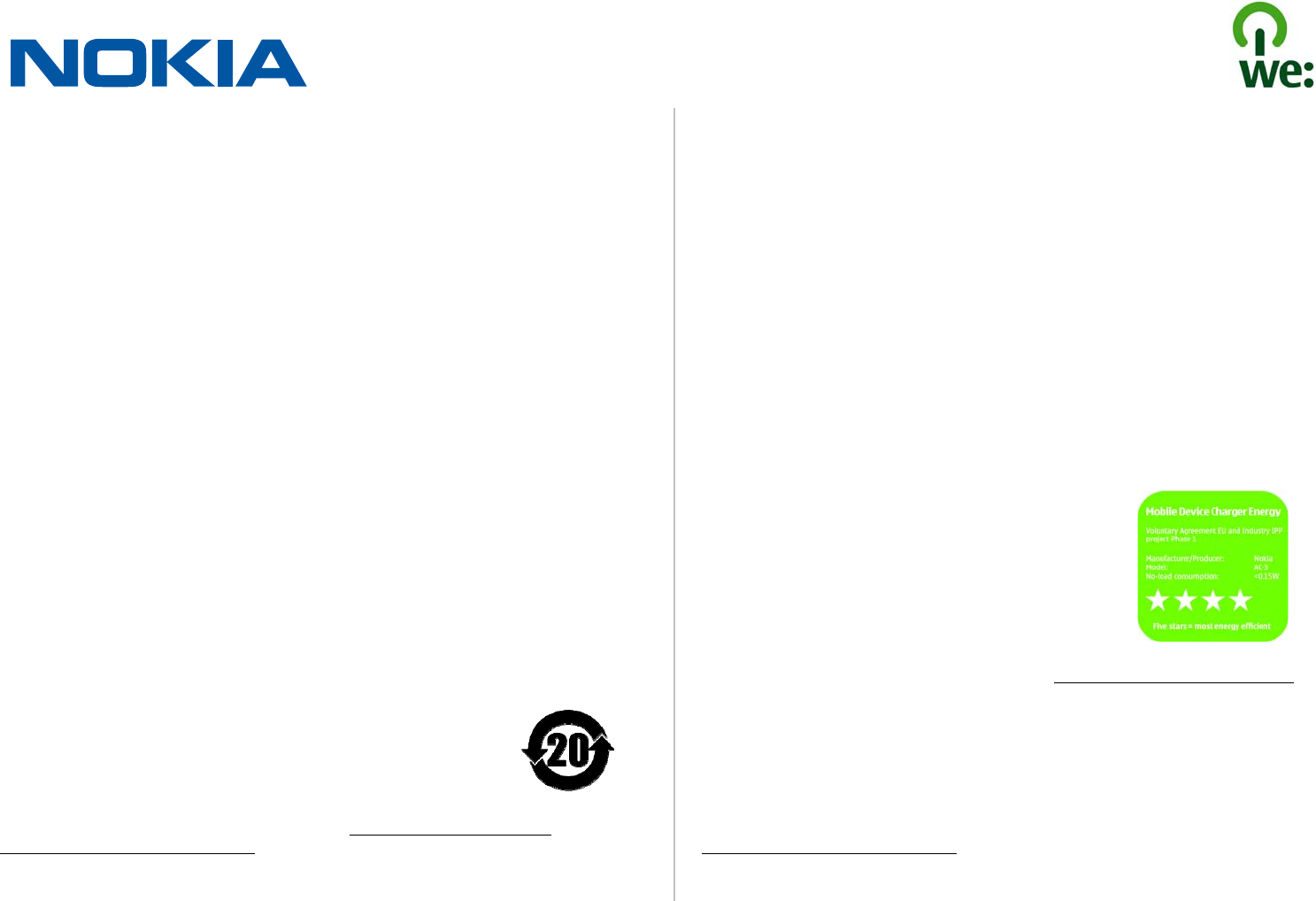
02-12-2009
Eco - Declaration
Copyright © 2009. All rights reserved. Nokia is a registered trademark of Nokia Corporation
Product: Nokia 7230
Product type: Mobile Device
Weight: 100 g
Size: Thickness: 14.75 mm x Width: 48 mm x Length: 98 mm
Volume: 64 cc (cm
3
)
Materials
This product does not contain:
1
• Azo colorants and pigments with carcinogenic amino compounds
• Asbestos
• Benzene
• Beryllium Oxide
• Chlorofluorocarbons CFCs/HCFCs/Halons as banned in the Montreal Protocol
• Polychlorinated Biphenyls (PCB) or Polychlorinated Terphenyls (PCT)
• Short Chained Chlorinated Paraffins
• Materials using endangered species of flora and fauna
This product does not contain the following substances in accordance to
the EU RoHS Directive 2002/95/EC:
• Cadmium • Mercury
• Chromium (VI)
• Polybrominated Biphenyls (PBB)
• Lead • Polybrominated Diphenyl Ethers (PBDE)
Versions of this product for China market comply with
the China legislation “Management Methods on the
Prevention and Control of Pollution caused by Electronic
Information Products” commonly known as “China RoHS”.
Find out more on materials in your product at www.nokia.com/materials
1
In levels more than 100 ppm by weight in the product.
All information in this eco-declaration is based on scientific analysis and/or data provided by suppliers. There may
be some variance in the information.
• This product does not contain Brominated or Chlorinated compounds or
Antimony trioxide as specified in Nokia Substance List requirement and
definition.
• The surface of this device does not contain nickel in the platings. The
surface of this device contains stainless steel.
• Polyvinylchloride (PVC) is not used in this product or its packaging.
Energy consumption
The power consumption
2
of this product with the standard
NOKIA battery type BL-4CT in average is listed below:
Call: 760 mW
Idle mode: 9 mW
Charger Energy:
Charger model (default):
AC-3
No-load power consumption: 0.15 W
More information on chargers and the label at www.nokia.com/chargerenergy
2
The measured values are depending on e.g. measurement environment, frequency and operator network settings.
The measurements are made @ 1800 MHz according to reference document: GSM Association Official Document:
DG.09, ‘Battery Life Measurement Technique’. http://www.gsmworld.com/documents/




